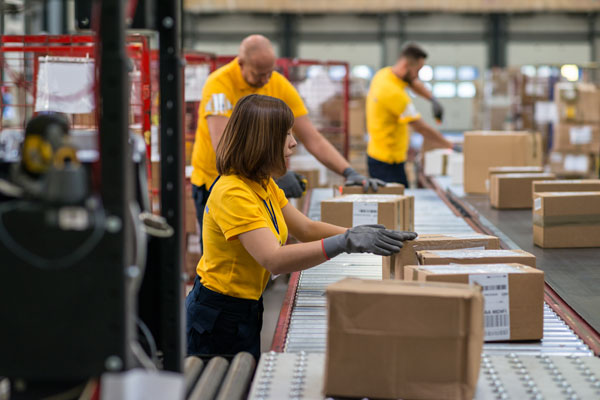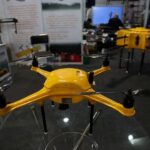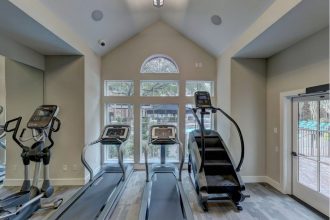Understanding Kitting and Assembly in Manufacturing
Enhancing productivity in manufacturing is crucial, and implementing practical solutions like kitting and assembly has become a game-changer in the industry. Kitting refers to compiling all necessary components and materials before they reach the assembly line. Producers can significantly minimize the time and labor needed in the assembly stage by arranging these components into ready-to-use kits. This streamlines operations and improves precision, ensuring that each product is assembled with all its necessary elements. Assembling products once all the parts are sorted into kits reduces the potential for human error, leading to more efficient manufacturing processes that save both time and resources.
Kitting’s efficiency gains stem from its fundamental organization strategy, which groups components logically. This reduces fatigue and confusion in fast-paced production environments requiring swift decisions. Workers can focus on quality and precision instead of wasting efforts on material searches, ultimately enhancing the overall production workflow.
The Benefits of Implementing Kitting Solutions
- Time Savings: Implementing kitting solutions means that all the necessary components are pre-packaged and ready for assembly, significantly reducing workers’ time retrieving parts. This speeding up of the assembly process shortens production lead times and boosts the total output of the manufacturing line.
- Error Reduction: Assembling kits ensures each kit contains all needed parts, minimizing the chances of missing components and their associated mistakes. This leads to fewer product recalls or rework instances, saving on potential costs incurred by such errors. According to ScienceDirect, well-structured kitting processes significantly improve assembly efficiency and reduce error rates in manufacturing environments.
- Cost Efficiency: Kitting lowers operational costs by cutting time and reducing errors. This cost-saving measure enhances the company’s bottom line by reducing the need for surplus inventory and overproduction, creating a leaner manufacturing process.
Real-World Applications of Kitting in Manufacturing
Kitting solutions are extensively employed across numerous industries, proving indispensable in complex manufacturing environments. For instance, kitting efficiently assembles intricate and heavily engineered components such as engines and transmission systems in automotive production. This process ensures that all the parts needed are present when it counts most, facilitating a smooth and error-free assembly line operation.
Similarly, kitting proves invaluable in the electronics industry, where the sheer number of tiny, intricate parts enhances manufacturing complexity. Electronics manufacturers rely on pre-packaged kits for every resistor, diode, and microchip. This meticulous attention to detail helps maintain product quality and boosts manufacturing reliability, reinforcing kitting’s critical role in contemporary production practices.
How Assembly Solutions Enhance Productivity
Assembly solutions, when paired with kitting, further amplify manufacturing productivity. Upon reaching the assembly line, pre-packed kits enable line workers to focus solely on constructing final products without disruption. This integration of kitting and assembly reduces bottlenecks, making production flow smooth and uniform.
Additionally, having a structured assembly process supports quality assurance initiatives. The precision and consistency fostered by kitting and assembly allow workers to focus on the finished product’s quality, minimizing deviations and defects. Smooth operations on the assembly line translate to a higher output of quality products, benefiting both manufacturers and consumers.
The Impact of Technology on Kitting and Assembly
Technological advancements have greatly benefited kitting and assembly solutions. Modern automation technologies now enable manufacturers to maintain real-time tracking of components, streamline kit-building processes, and ensure that operations run with minimal manual interference. Such innovations are crucial to maintaining a competitive edge and operational efficiency.
Incorporating advanced technology into kitting transforms these processes into a precise science. Automated systems reduce not only the manual tracking of inventory but also future-proof operations against seasonal and market fluctuations, allowing manufacturers to respond promptly to demand changes with confidence and accuracy.
Challenges and Solutions in Streamlining Manufacturing
Despite its numerous benefits, the transition to comprehensive kitting and assembly solutions presents challenges. Initial setup costs, staff retraining, and technology integration can be significant hurdles to overcome. Nevertheless, these challenges can be successfully navigated by investing in proper training and opting for scalable technological solutions that seamlessly mesh with existing structures.
Effective implementation involves strategic planning and gradual adaptation. Positive outcomes require a commitment to ongoing training programs and a willingness to embrace cutting-edge technologies to optimize time and resource management in manufacturing settings.
Best Practices for Effective Kitting and Assembly
- Consistently update and optimize kit designs, aligning these with evolving product specifications and manufacturing objectives.
- Take advantage of advanced software for real-time inventory tracking and kit assembly, which improves accuracy significantly.
- Conduct frequent training workshops to ensure that the workforce is adept in utilizing new kitting and assembly methodologies, reducing resistance to change and enhancing operational fluency.
Future Trends in Kitting and Assembly Solutions
The future of kitting and assembly in manufacturing is poised further to leverage technological advancements, such as AI and robotics. These technologies promise to elevate operations by optimizing labor allocation, enhancing precision, and facilitating seamless adaptation to varying production demands.
Manufacturers who stay ahead of these trends benefit significantly by maintaining a proactive approach to process evaluation and improvements. Position in a progressively competitive market environment. This will guarantee they harness the complete potential of technologies, realizing continuous productivity and efficiency improvements while solidifying their position in a more competitive market environment.













